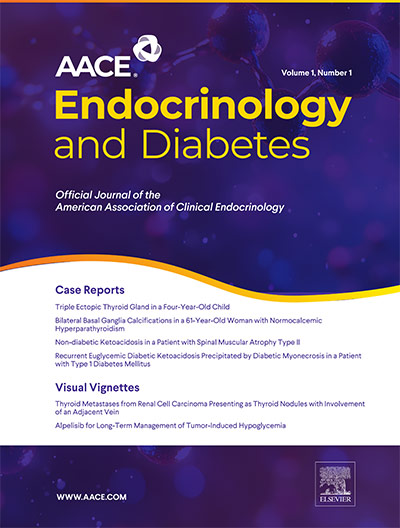
Now Available!
AACE’s Re-invented Open Access Journal
AACE Endocrinology and Diabetes is the premier open-access journal dedicated to advancing clinical and translational research in diabetes and endocrinology. As the companion journal to Endocrine Practice, it provides a high-impact platform for endocrinologists, researchers, and clinicians to share cutting-edge findings, innovative case reports, and expert reviews that directly impact patient care.
With a broad scope covering diabetes, obesity, metabolism, thyroid disease, bone health, lipid disorders, reproductive endocrinology, and more, the journal welcomes diverse contributions—including hypothesis-generating studies, pilot research, negative and confirmatory studies, and epidemiologic investigations. Special issues will highlight emerging topics, ensuring timely insights into the evolving field of endocrinology.
By publishing in AACE Endocrinology and Diabetes, authors gain global visibility, rapid dissemination, and the opportunity to contribute to AACE’s mission of improving endocrine patient outcomes. Join a growing community of thought leaders shaping the future of endocrine science and care.
ACCESS THE JOURNALNow Accepting Manuscripts!
SUBMIT YOUR MANUSCRIPTAACE Members Save on Publishing
- 20% Discount on Article Publishing Charges (Open Access publication)
- $1,080 for Original Research and Reviews
- $600 for Case Reports
- $320 for Visual/Video Vignettes
Call for Peer Reviewers
Journal peer reviewers evaluate manuscripts and provide constructive criticism to editors and authors. Outstanding reviewers may be considered for the Editorial Board. If you are interested in serving, email [email protected], with your CV/bio, your area of expertise or specialty, and reasons for interest.
